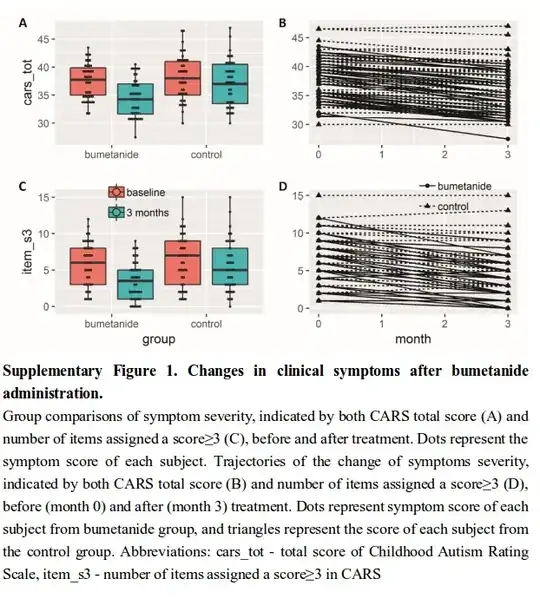Remember the definition of the p value:
This is the probability, under the null hypothesis, of sampling a test statistic at least as extreme as that which was observed
The null hypothesis is not stated. In such cases it is typically one of "no difference".
If this null hypothesis is true, we can still observe a difference in observed means of 1 SD. This probability is small for small sample sizes... smaller for larger sample sizes... smaller yet for really large sample sizes.
Bottom line: for a given effect size (your difference in means of about 1 SD would correspond to an effect size of $d=1.0$, which is sometimes indeed called "large"), we can make the p value arbitrarily small by increasing the sample size.
Whether a difference of 1 SD is clinically significant is another matter entirely.
EDIT: you add that there are about 40 participants in each group. We can do a rough sanity check of the p value by simulation.
Specifically, we simulate 40 "participants" in each group, with normally distributed outcomes. Per the definition of the p value, we assume that the null hypothesis is true, so we use the same mean $0$ for both groups. For simplicity, we also use the same variance $1$.
We then take means within each simulated group, and record whether the mean of the first group exceeds the mean of the second group by at least $1$ SD (for a one-sided test).
We repeat this simulation many times, and check how often we have a positive result.
Below is R code repeating the simulation $1,000,000$ times.
n_sim <- 1e6
hits <- replicate(n_sim,return(mean(rnorm(40))-mean(rnorm(40))>1))
sum(hits)
When I run this, I get $3$ hits, which corresponds to $p=3\times 10^{-6}$. It's not the exact same number as the p value reported in that paper, but it's in the same ballpark of "exceedingly tiny". (Note that there is little "real" difference between p values this tiny.) In particular, it's not like our simulation yielded $p=0.2$, which would indeed indicate that something is amiss.
So even without digging deeply into potential issues of that paper, the p value is not completely unrealistic.
